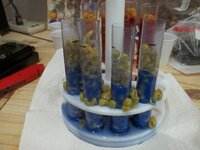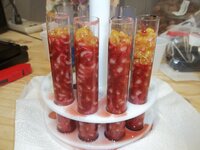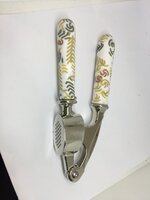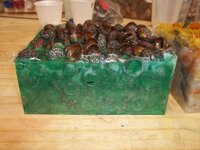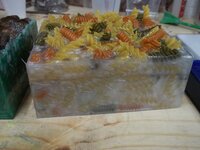pssherman
Member
My first attempt at casting embedded objects was a disaster. I was embedding pasta noodles which would trap air so I applied a vacuum to try to remove the trapped air. As you can see the expanding trapped air pushed a lot of the noodles and resin out of the tubes. My second attempt was embedding accorn caps in a block mold, I don't have pics of this one. I used a vacumm again and it looked like there was an explosion in the middle of the block mold. I used masking tape to extend the sides of the mold hoping to contain the expanding air and resin. It wasn't enough, resin and accorn caps littered the bottom of the pressure tank. Since I opened the tank after the vacuum was applied I was able to scoop out most of the accorn caps and resin from the bottom of the tank. I think I am going to go with pressure only and live with the voids caused by trapped air. Maybe they won't be too big.
